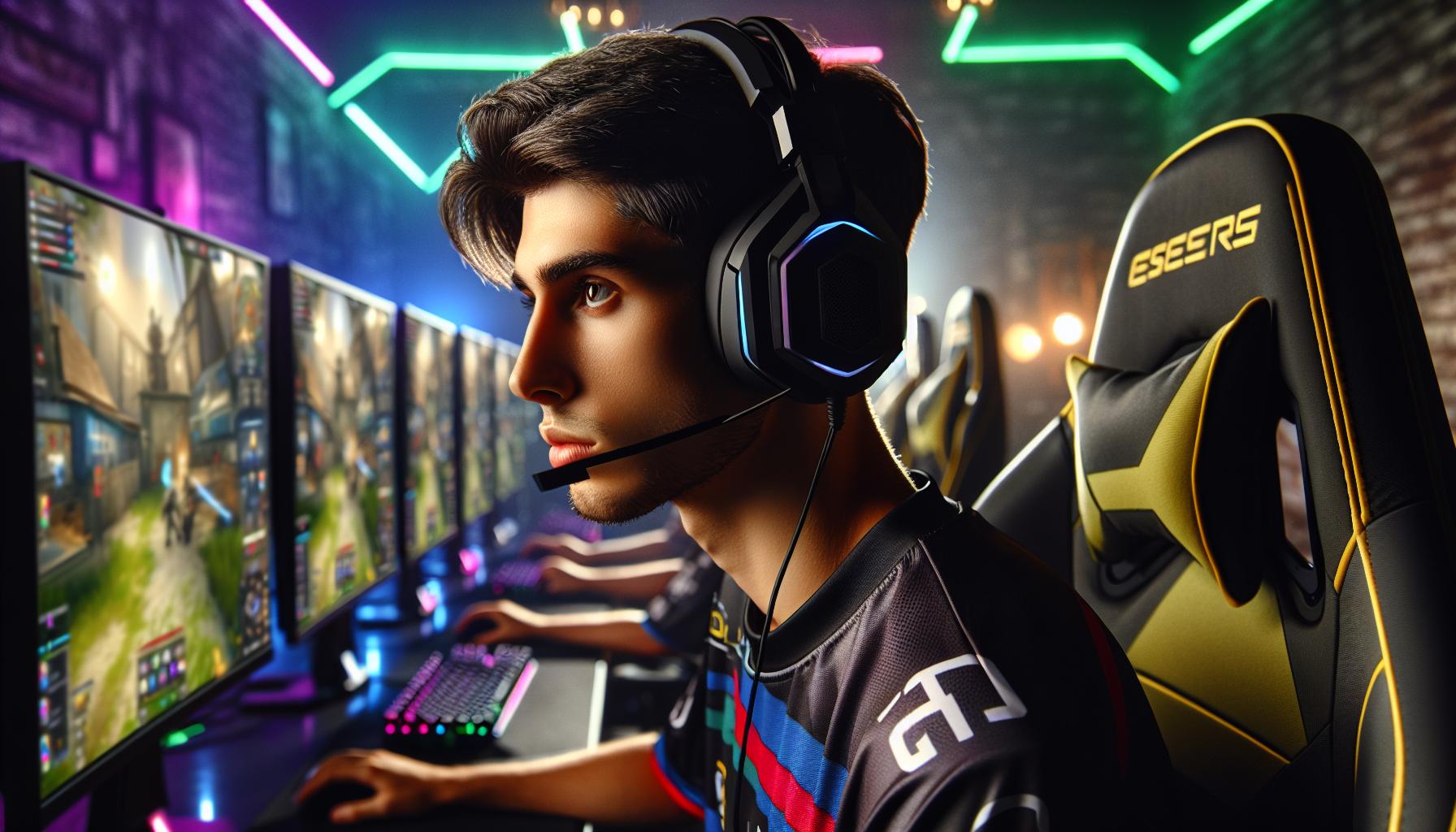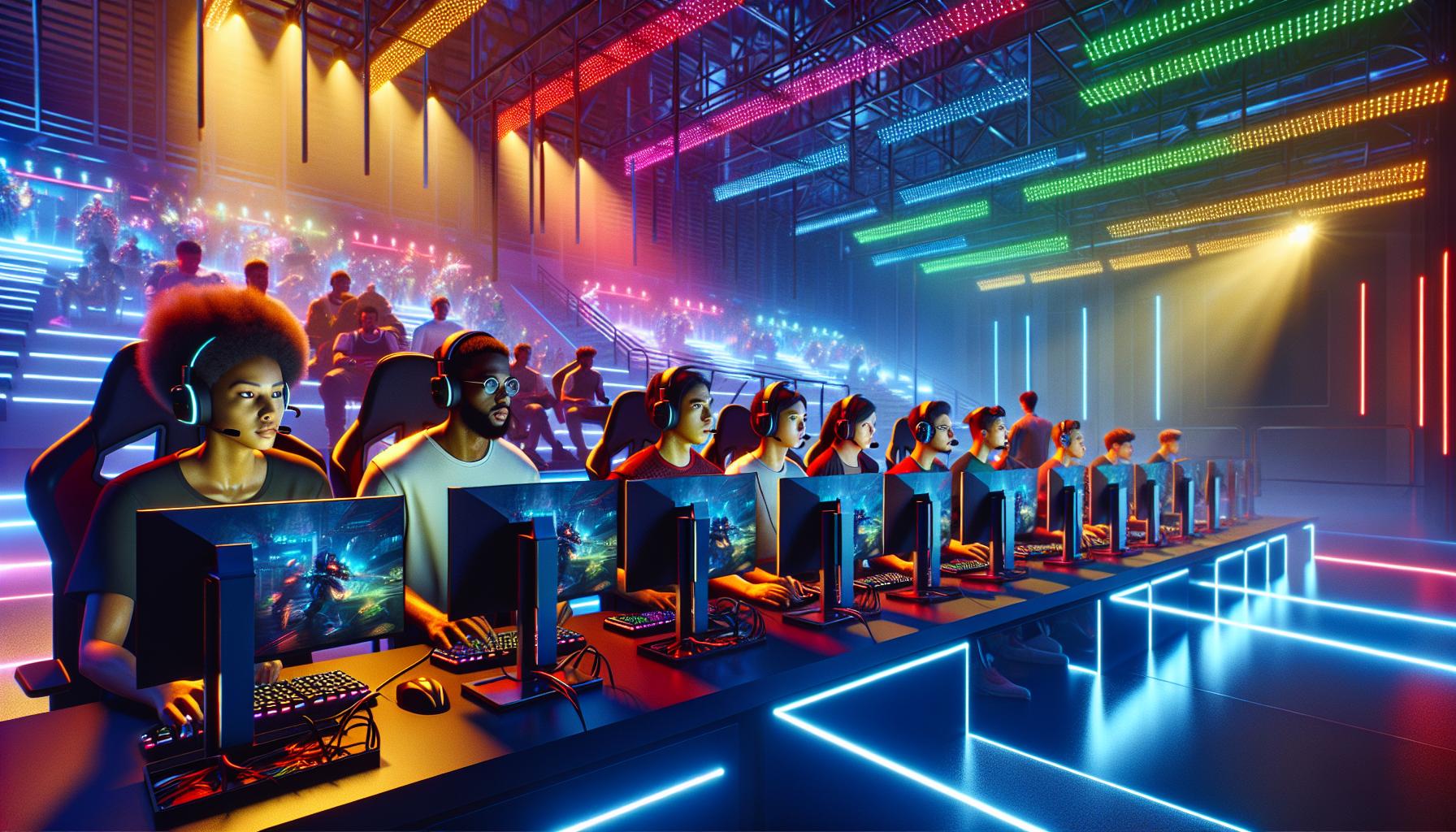Phone:
(701)814-6992
Physical address:
6296 Donnelly Plaza
Ratkeville, Bahamas.

As stadiums fill with roaring fans cheering on athletes, another arena thrives behind glowing screens and lightning-fast reflexes—esports. Once seen as mere video game hobbyists, these digital warriors are now challenging the very definition of what it means to be a sport.
With tournaments drawing millions of viewers and players training as rigorously as their physical counterparts, the debate heats up. Are strategic minds and precision clicks enough to earn esports their rightful spot alongside traditional athletics? It’s time to level up the conversation and explore whether virtual competition deserves the same accolades as running a marathon or scoring a touchdown.
A sport typically involves organized competitive activities that require physical exertion, skill, and strategy. Traditional definitions emphasize elements such as physical ability, adherence to rules, and structured competition. According to the International Olympic Committee (IOC), a sport must include physical exertion and skill, with standardized rules and organized competition levels.
Key components defining a sport include:
Esports, or electronic sports, align with many of these criteria. They involve strategic gameplay, require high levels of skill and coordination, operate under strict rules, and feature organized competitions with global audiences. While the physical exertion in esports differs from traditional sports, the mental and strategic demands present a comparable level of competitiveness and professionalism.
By examining these defining aspects, the classification of esports as a sport becomes a topic of consideration, highlighting the evolving nature of competitive activities in the modern era.

Esports refers to competitive video gaming at both amateur and professional levels. It encompasses various genres, including strategy, shooter, and sports simulation games.
Esports began in the 1970s with early competitions like the 1972 Spacewar! tournament. The 1990s experienced significant growth as games such as Street Fighter and StarCraft gained popularity. In 2000, the Electronic Sports League was established, formalizing competition structures. Online streaming platforms expanded the reach, allowing global audiences to engage. Technological advancements enhanced gameplay quality and event production. Mobile gaming introduced new demographics to the esports scene. Prize pools increased, attracting professional players and major sponsors. From niche gatherings, esports evolved into a mainstream entertainment form, mirroring traditional sports in organization and professionalism.
Today, esports features multiple genres, including MOBAs, FPSs, and battle royales. Major tournaments like The International and the League of Legends World Championship attract millions of viewers. The industry generates billions in revenue through sponsorships, media rights, and merchandise sales. Professional teams consist of dedicated players, coaches, and support staff. Collegiate esports programs offer scholarships and structured competitions, fostering new talent. Streaming platforms such as Twitch host live broadcasts, enhancing fan engagement. Corporate investments continue to surge, driving infrastructure development. Esports arenas host live events, similar to traditional sports venues. Global participation spans continents, reflecting a diverse and expansive community.
Traditional sports and esports share many competitive elements, yet they differ in several key aspects. Understanding these differences highlights the unique attributes of each arena.
Traditional sports require significant physical exertion, enhancing athletes’ strength, endurance, and agility. For instance, a football player undergoes rigorous training to improve speed and coordination. In contrast, esports primarily demand fine motor skills and hand-eye coordination. While esports athletes spend long hours practicing strategic gameplay, their physical training focuses on maintaining posture and preventing repetitive strain injuries. Despite the lower physical intensity, the physical stamina needed to compete at high levels in esports should not be underestimated. Both realms emphasize discipline and physical preparation, though the nature of their physical requirements varies distinctly.
Esports emphasizes strategic thinking, quick decision-making, and intense concentration. Players analyze opponents’ tactics and adapt strategies in real-time during matches. For example, a League of Legends player must continually assess the game state and make split-second decisions to outmaneuver opponents. Traditional sports also require strategic planning, but they integrate physical execution with mental agility. Coaches develop game plans, and athletes must execute these strategies under pressure. Both esports and traditional sports demand high levels of mental resilience and strategic insight, but esports often involve more complex and rapidly changing virtual environments.
Esports continues to gain recognition and legitimacy within the broader sports landscape. This section explores the institutional support and public perception that contribute to its standing.
Esports receives backing from major institutions, enhancing its legitimacy. Universities offer scholarships for esports athletes, with over 200 colleges in the U.S. establishing dedicated programs. Recognized sports organizations, such as the International Olympic Committee, acknowledge esports as a potential future sport category. Additionally, national governments invest in esports infrastructure, recognizing its economic and cultural impact. Sponsorship deals with brands like Intel and Coca-Cola underscore corporate confidence in esports’ growth. Professional leagues, including the Overwatch League and League of Legends Championship Series, operate under structured regulations, mirroring traditional sports frameworks. These developments indicate a robust institutional foundation supporting esports’ status as a legitimate competitive field.
Public perception of esports evolves as its visibility increases. Surveys show that 60% of the global population recognizes esports as a competitive activity similar to traditional sports. Media coverage on platforms like ESPN and Twitch elevates its mainstream appeal, reaching millions of viewers worldwide. Major events, such as The International and the League of Legends World Championship, attract viewership comparable to traditional sporting events. Additionally, mainstream athletes and celebrities endorse esports, bridging the gap between traditional and electronic sports. Despite some skepticism, the growing acceptance is evident in diverse demographics engaging with esports content. This shift reflects a broader societal acknowledgment of esports’ legitimacy and its place within the competitive sports arena.
Esports significantly influences both the global economy and cultural landscape. Its growth reshapes traditional markets and societal norms.
Esports revenue reached $1.62 billion in 2024, driven by sponsorships, advertising, and media rights. Major tournaments like The International and League of Legends World Championship attract millions of spectators, enhancing viewer engagement. Investment from brands such as Coca-Cola and Intel underscores the sector’s financial potential. Additionally, the expansion of professional teams and leagues contributes to job creation and economic development. Merchandise sales and streaming platforms like Twitch further amplify revenue streams. The global esports audience surpassed 500 million, reflecting its widespread appeal and market penetration. This rapid growth positions esports as a formidable player in the entertainment industry, rivaling traditional sports in financial terms.
Esports fosters community and inclusivity, connecting diverse populations worldwide. Educational institutions offer scholarships, promoting academic and athletic balance. The industry encourages technological advancements and digital literacy among youth. Social media platforms enhance fan interaction and content sharing, increasing cultural integration. Esports events serve as social gatherings, strengthening global connections and cultural exchange. Moreover, representation in gaming promotes diversity and acceptance, challenging traditional stereotypes. The rise of esports role models inspires the next generation, emphasizing the value of teamwork and strategic thinking. This cultural shift highlights esports’ role in shaping modern entertainment and societal values.
Esports has undeniably transformed the landscape of competitive activities. Its rapid growth and widespread acceptance mirror the trajectory of traditional sports. The dedication and skill required of esports athletes highlight their commitment similar to physical sports counterparts.
As technology continues to evolve, the lines between virtual and physical competition blur. Esports not only entertains millions but also fosters global communities and drives economic growth. This dynamic field challenges conventional definitions and pushes the boundaries of what defines a sport.
Recognizing esports as a legitimate sport acknowledges its impact and the passion of its participants. Embracing this modern competitive arena opens doors to new opportunities and celebrates the diverse skills that athletes bring to the table.